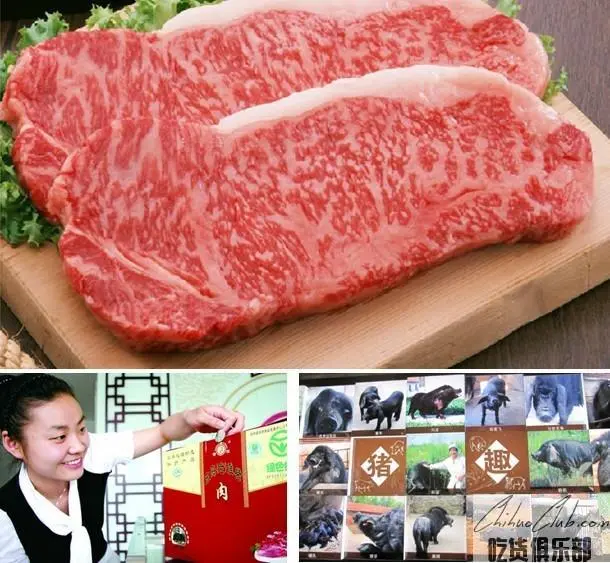
Donghai Laohuai Pork
-
Update date::
-
Date of protection::
-
Protected range:The protection scope of the East China Sea (old) Huai pork geographical indication products is the administrative area under the jurisdiction of Donghai County, Jiangsu Province.
-
Related origin:jiangsu lianyungangshi donghaixian donghaixian-anfengzhen donghaixian-baitabuzhen donghaixian-fangshanzhen donghaixian-hongzhuangzhen donghaixian-huangchuanzhen donghaixian-jiangsudonghaigaoxinjishukaifaqu donghaixian-jiangsudonghaijingjikaifaqu donghaixian-linianxiang donghaixian-niushanjiedao donghaixian-pingmingzhen donghaixian-qinghuzhen donghaixian-quyangxiang donghaixian-shanzuokouxiang donghaixian-shihuxiang donghaixian-shilianghezhen donghaixian-shiliujiedao donghaixian-shuangdianzhen donghaixian-taolinzhen donghaixian-tuofengxiang donghaixian-wenquanzhen donghaixian-zhangwanxiang
-
Category:
Donghai Laohuai pig is a famous and excellent local pig breed in China. It has the unique characteristics of high fertility, resistance to rough feeding and strong disease resistance. Donghai Laohuai pork has a delicious meat flavor and rich flavor. It is known as “a meaty village full of incense”.
Donghai Laohuai pig is an ancient and famous type of North China pig breed in China. It is famous for its delicious meat, unique flavor and pure taste. The old Huai pig originated from the Qin Dynasty and has a breeding history of more than 2,000 years. It is an ancient North China type pig breed in the history of China. It is also the only local pig breed in China and a close family of wild boar. In 2006, it was included in the “National Catalogue for the Protection of Livestock and Poultry Breeds”. On September 23, 2009, the AQSIQ awarded the title of “Donghai Laohuai Pork” National Geographical Indication Product Protection. At present, the price in the domestic market is more than 50 yuan per kilogram, and the price in the international market reaches more than 20 US dollars per kilogram. The breeding of old Huai pigs is based on ecological and healthy farming techniques. The pig house here is spacious and clean; after dinner, there are desserts, fruits and vegetables, and desserts; The pigs here enjoy excellent welfare and get the most happiness.
Donghai (old) Huai pork quality technical requirements (a) varieties. Huai pig (Huaibei pig). (2) Feeding management technology. 1. Piglets: (1) Suckling piglets: 3 days iron supplementation, 7-day feeding, crude pig protein content 19.0% to 21.0%. (2) Weaned piglets: Weaning at 45 to 60 days of age, weighing 8 kg to 13 kg, feeding diet 0.4 kg to 0.6 kg, and the crude protein content of feed is 17.0% to 18.5%. 2. Growing and fattening pigs: (1) The body weight ranges from 20kg to 35kg, and the diet is fed from 1kg to 1.5kg, and the crude protein content is 15.0% to 16.0%. (2) The weight of 36 kg to 50 kg, feeding diet 1.5kg to 2.0kg, crude protein content 13.5% to 14.0%. (3) The weight of 51 kg to 70 kg, feeding diet 1.75kg to 2.0kg, crude protein content 12.5% to 13.5%, peanut meal or hawthorn addition accounted for 4.0% to 6.0% of the diet. (4) The body weight is 71kg to 90kg, the diet is 1.5kg to 1.75kg, the crude protein content is 12.0% to 13.0%, and the peanut meal or hawthorn is added in the range of 8.0% to 12% of the diet. (5) The fattening pigs are slaughtered at 9 to 10 months of age and weigh between 80 kg and 90 kg. (6) The use of preventive, therapeutic and pharmaceutical additives strictly adheres to relevant standards and regulations. All drugs are banned 35 days before the fattening pigs are slaughtered. (7) Supplementing the green feed for the whole process: 0.15kg to 0.3kg in the previous period, 0.3kg to 0.5kg in the medium term, and 0.5kg to 1.0kg in the later period. (8) Feeding pigs: Set up a sports field on each lap with an average of 1 to 2 m2 steamed bread. 3. Environmental and safety requirements: The prevention and control of breeding environment and epidemic diseases must comply with relevant state regulations and must not pollute the environment. (3) Safe production of pork. 1. Slaughtering and processing: (1) Process: 24 hours before slaughtering → showering → fainting → assassination and bloodletting → scalding and hair removal → head hoof, internal organs → inspection → 劈 half → pre-cooling → split packaging → storage and transportation ( 2) Requirements: 1 The scalding water temperature is between 56 ° C and 63 ° C, and the scalding time is 8 to 12 minutes. Two pieces of pork should be split and wrapped after 12 to 18 hours of cooling. The wrapping material should be wicking, colorless, odorless and non-toxic. (4) Storage. The storage of the product should be clean and hygienic. Frozen pork products should be stored in a cold storage below -18 °C, the shelf life is not more than 180 days; fresh meat products should be stored in a cooling room of -2 ° C to 2 ° C, relative humidity of 85% to 90%, the shelf life is not more than 5 days. (5) Quality characteristics. 1. Sensory characteristics: skin thickness is 0.4 cm to 0.6 cm; muscle color is bright red or deep red, fat is white, shiny, and marble is obvious; after boiling, the broth is clear and transparent, and the fat is concentrated on the surface, and the aroma is rich. 2. Physical and chemical indicators: project indicators meat color (minutes) 4 muscle PH value 5.6-6.5 water loss (%) 10 ~ 15.0 tenderness (kg · F) ≤ 3.5 intramuscular fat (%) 3.5-5.03. Safety requirements: products Safety indicators must meet the relevant regulations of the state for similar products.
Apply to:
Producers within the scope of protection of the East China Sea (old) Huai pork geographical indication products may apply to the Quality and Technical Supervision Bureau of Donghai County, Jiangsu Province for the use of the “Special Mark for Geographical Indication Products”, which is reviewed by the Jiangsu Provincial Bureau of Quality and Technical Supervision. The General Administration of Inspection and Quarantine announced the approval. The legal inspection agency for the East China Sea (old) Huai pork is designated by the Jiangsu Provincial Bureau of Quality and Technical Supervision.